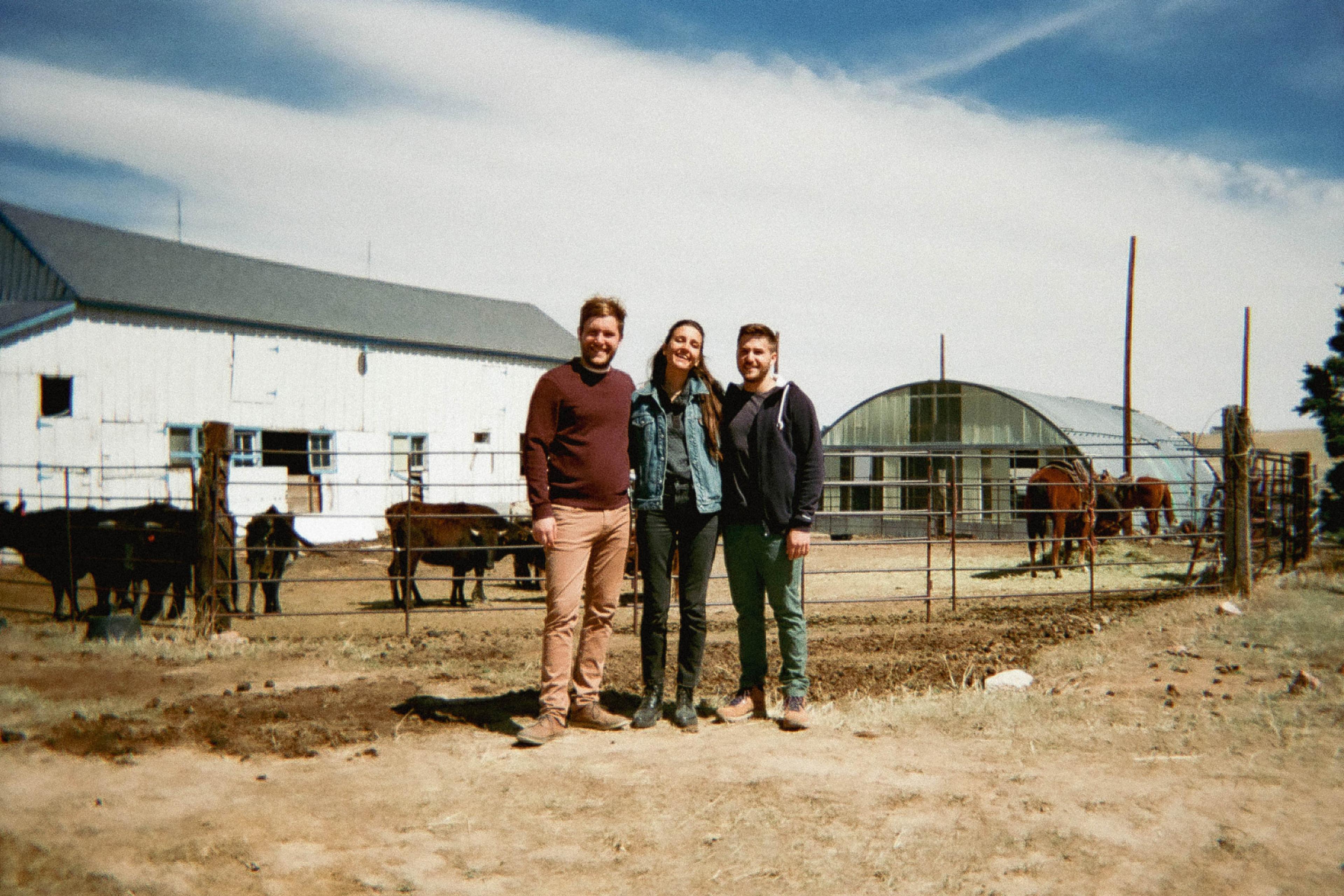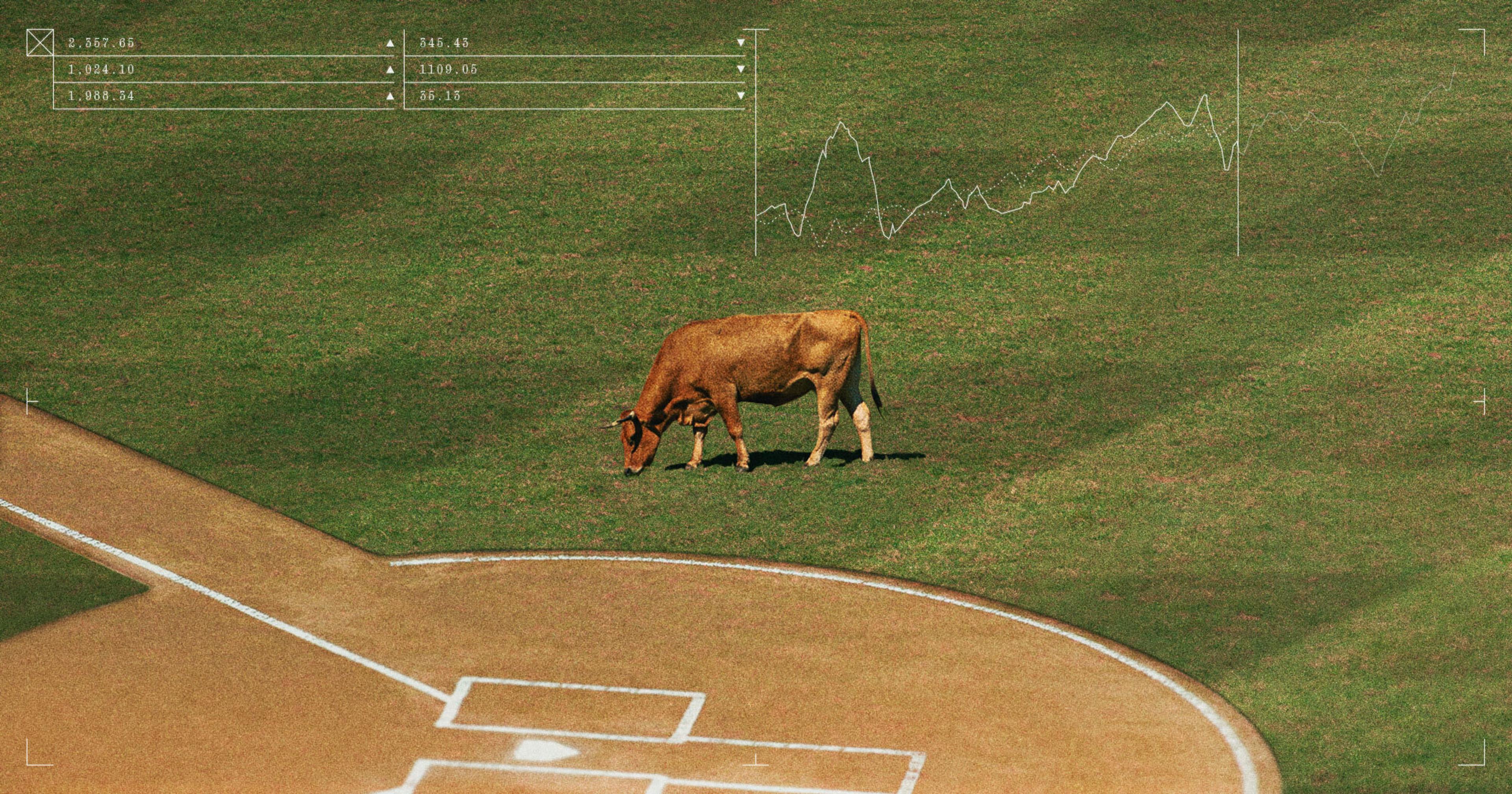Why we’re building financial management software for farms.
I.
Let me tell you a story.
Imagine you’re a cattle rancher in the high plains of Colorado.
You rent a small plot of land from a neighbor. You have twenty head of cattle.
You tell folks about how you came to Colorado from out East when you were fourteen, working a construction gig with your dad. You fell in love with horses and cattle and the lifestyle of ranching here. You decided to stay.
You’re hoping to buy your own land one day, and expand the small herd you have. Maybe you’ll explore regenerative grazing.
But to do that, you need to get your books in order. You get by, but your margins are thin. You need a business plan to give to your bank. Not to mention a balance sheet.
You’re working on it. But it’s hard to find time at the very end of your days, when you’ve been outside and one of your pups went missing and so you had to drive over to the neighbors’ to find him and then one of the cows gave birth when you got back.
You know the government has programs that will help you grow your ranch, but the applications are lengthy and hard to keep track of.
Not to mention that just to stay compliant as a rancher, you’re probably filing paperwork for six – or is it seven? – different government agencies.
You love your job, and you need to do all this to do your job. But all this means wiping the cow crap off your hands, going on the computer, and hunting through slow-loading government websites. One of them took 25 minutes to download a PDF last week. You made lunch in the meantime.
Farm accounting, farm funding, farm compliance. There’s paperwork for everything it seems. Hours and hours a week of paperwork.
And you’re worried about things happening around the world, outside your control. Drought and wildfires from climate change have wracked Colorado of late. Supply chains still backed up from the pandemic. Rising fertilizer and fuel costs from the war with Russia. Inflation making everything worse.
This rancher is real – and his name is Teo.
Teo is one of Ambrook’s early customers. We helped him get a farm grant during the pandemic, when the rodeos were shut down and the meat processing facilities were backed up. Now he’s using Ambrook to get his books in order and business plan in place.
This is Teo’s story, and the story of countless producers across the country. Some folks move into farming, like Teo. Many have been farming for their whole lives. The paperwork sucks all the same.
II.
Now, let me tell you my story.
I grew up with conversations about agriculture at the dinner table.
Tales of citrus production, the threat of longhorned beetles to American hardwood forests, the dynamics of illegal agricultural imports through the U.S.-Mexican border.
My parents were lifelong civil servants with the U.S. Department of Agriculture, so the conversations got pretty wonky.
For both of my parents, the job was personal.
My mom was born into a local dairy empire in India, built from a rural village in Gujarat and passed down generation after generation until my grandfather immigrated with his family to the United States. My dad grew up going to his family’s dairy, poultry, and produce farms in New England.
I turned out pretty wonky too.
My path looks eclectic from the outside – my first startup built open source software infrastructure, then I went back to grad school to work with U.S. military officials on climate risk, and then I worked on water trading in the Central Valley.
The common theme connecting all these dots is that I’m driven to solve esoteric societal problems – preferably with technology.
There are jobs out there where you can really make a difference in people’s lives.
III.
Most agriculture today is neither sustainable nor resilient.
On sustainability: forty percent of U.S. land and freshwater is devoted to farming. U.S. agriculture contributes to upwards of one-quarter of the nation’s greenhouse gas emissions.
On resilience: climate change is already devastating agriculture and rural communities. (“Adapt or die,” was what one producer told us for Ambrook Research.)
If we’re going to meet the UN’s projected 70% increase in food demand by 2050, something needs to change.
Fortunately, many sustainable farming practices both reduce agriculture’s climate impact and make farms more resilient. However, many farms are not investing in sustainability for three main reasons:
Farm margins are thin and increasingly volatile.
Antiquated systems make it hard to know where farms are making and losing money.
There isn’t enough financing out there to fund sustainable practices.
Here’s a real-life example: planting a cover crop benefits the soil, captures carbon, and usually makes the farmer a bit of money. But it’s an additional investment and risk – a few years of upfront cost, labor, and equipment before you start to see any return on investment. That means a lot of farmers today are reluctant to start cover cropping, despite the value-add to their soil, the environment, and their bottom line.
If you’re worried about or don’t fully understand your bottom line, it’s hard to invest in the sustainable practices that would secure the long-term financial and environmental health of your farm. Farms are complex operations, yet farm financial management still exists as a loosely-connected constellation of pen and paper, Excel, Quickbooks, and decades-old industry software. It’s hard for a lot of farmers – and their finance managers, bankers, and local USDA officials – to know what’s going on in real-time.
Ambrook builds simple, collaborative financial management software for farms. Grant discovery, bookkeeping, spend management with cards, bill pay – the whole fintech gamut. With Ambrook, farmers have a clear view into their financial present and future, can improve their margins, and get easier access to credit.
And of course, farmers have to do less paperwork, because Ambrook makes it easy to automatically fill and file government forms.
When we started Ambrook, we were surprised no one had built this yet. As we dug in, it became clear the reason was because it was hard to build a venture-scale business before the rise of fintech primitives.
Fintech has opened up new business models, where users get software for free and networks, banks, or vendors pay the fees. For thin-margin businesses like farms, this makes software far more accessible to the long-tail of the market – to the everyday farmer. And it makes it easier to scale into enterprise applications and compete against expensive ERP platforms.
Agriculture is characterized as one of the least digitized industries – not because farmers are anti-technology, but because few companies have built for their use case. Many farmers, regardless of their size, run sophisticated operations. They deserve the tools to match.
Over time, we plan to layer in sustainable financing and resource management. Once we’ve solved this problem for agriculture, we’ll expand to other natural resource industries – fisheries, forestry, mining – faced with the same problem of making sustainability profitable.
IV.
Ambrook is built on a philosophy of pragmatic environmentalism: if you care about the earth, then you should care about the people whose jobs are to be stewards of the earth.
If our team succeeds, we’ll have built a far more resilient natural resource supply for society – starting with food and water.
Farmers using our software will be able to invest in more sustainable practices while lowering their costs and improving their margins.
More carbon will be stored in the soil. Less freshwater will be sucked from aquifers. Less nitrogen will pollute our waterways.
And our customers will be able to keep the family farm in the family for longer, weathering increasingly volatile market and climate shocks, in a way that actually starts building wealth again for rural America.
We’ve stayed lean so far, prioritizing a small, fast, senior team as we figured out the best place from which to tackle this problem. We think the product speaks for itself – but you can read about how thoughtful Brian has been about designing our cross-platform experience, or Atticus has been about diving deep into research and customer case studies.
Now that we know we’re onto something, we’re hiring aggressively to go after the opportunity.
If you want to build a new financial stack from the ground up and become an expert in everything from banking and cards to lending and accounting, you should join us. If you want to solve problems in climate or agriculture, you should join us.
Basically, if you come to Ambrook, you’re going to learn how to build this weird, huge business tackling real, deep problems. Most people don’t spend enough time thinking about or being exposed to hard, interesting spaces. At Ambrook, you get the full fintech + SaaS training, but also the muscles to connect those things to challenging problems.
Then, when you’re ready, Jeff, Dan and I will back you to start your own company and introduce you to all our investors. Because, at the end of the day, we need more founders and experts solving problems for these industries and for climate change – that’s my priority.
See you soon,
Mackenzie
P.S. We visited Teo at his ranch last month – you can hear his story in his own words in this beautiful little video that Stripe just released about Ambrook.
This Founder’s Letter was originally published in Not Boring.






